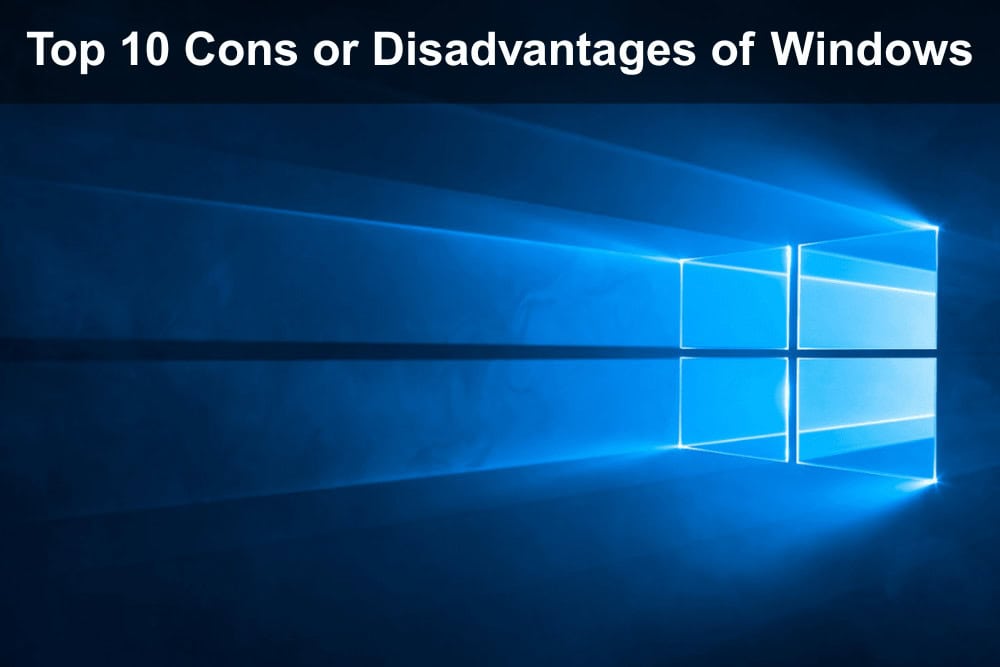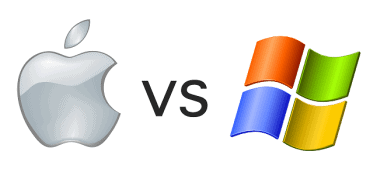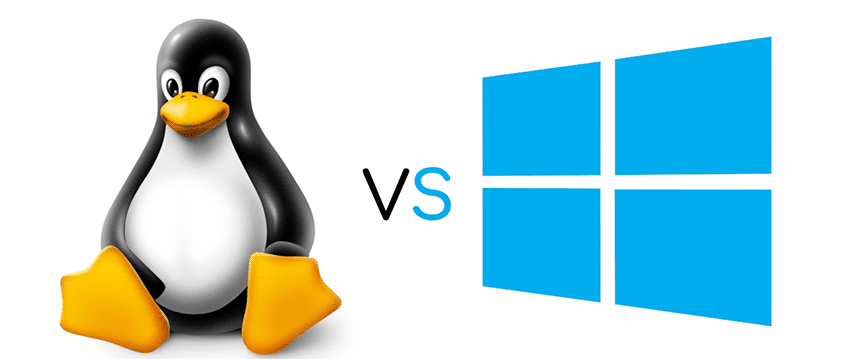
Microsoft developed the Windows Operating System, which has become one of the world’s most widely used operating systems due to its user-friendly interface and broad compatibility. Its widespread adoption across personal, business, and educational settings highlights its versatility and appeal to a diverse range of users. However, despite its popularity and continuous improvements, Windows OS faces criticism in areas such as security, performance, and user autonomy.
These challenges can impact users differently, making it essential to understand the system’s drawbacks to make informed decisions about its use. Here are the top 10 disadvantages of the Windows Operating System:
The 10 Drawbacks or Disadvantages of the Windows Operating System

We must acknowledge that no operating system is perfect, and Windows OS is no exception. Even the top hardware development companies like InTechHouse face challenges optimizing for their demands. The following sections will examine the key disadvantages users and professionals often encounter while using Windows. These cons range from technical limitations to broader concerns regarding usability and integration, highlighting the aspects where Windows may fall short compared to other operating systems.
1. Security Vulnerabilities
One of the most significant drawbacks of the Windows Operating System is its vulnerability to security threats. As the most commonly used desktop OS worldwide, it has become a lucrative target for cybercriminals. The complexity of the system and its popularity make it more prone to attacks compared to less widely used operating systems.
- High Target for Malware: Windows is frequently targeted by various forms of malware, including viruses, trojans, and ransomware, due to its large user base.
- Exploit of System Vulnerabilities: Hackers often target known and unknown vulnerabilities within the Windows system, leading to potential security breaches.
- Phishing and Social Engineering Attacks: Windows users are often the target of phishing and social engineering attacks, exploiting the user’s trust and lack of awareness.
Real-Life Example: In a notable incident, the WannaCry ransomware attack in 2017 heavily impacted Windows systems worldwide. The attack exploited Windows’ SMB protocol vulnerability, affecting thousands of computers across various industries, including healthcare and transportation. This event highlighted the importance of maintaining up-to-date security measures in Windows environments.
Resolution Strategies: To mitigate such vulnerabilities, Microsoft could intensify its focus on security by regularly updating and patching known vulnerabilities. Educating users about safe computing practices and regular updates could also play a vital role in preventing attacks. Additionally, incorporating more advanced, built-in security features and tools in Windows could further enhance its defense against cyber threats.
2. High Resource Requirements
Windows, particularly its latest versions, demands significant hardware resources, which can be a major drawback for users with older or less powerful computers. The requirement for higher RAM, advanced processors, and substantial storage space means that not all machines can efficiently run the latest Windows OS.
- Demand for Higher RAM and CPU: Newer versions of Windows require more RAM and faster CPUs to operate smoothly.
- Large Storage Space Requirement: Windows installation and updates can take up considerable hard drive space.
- Slower Performance on Older Hardware: Users with older systems may experience lag and reduced performance when running newer Windows versions.
Real-Life Example: Consider a small business using several years-old computers. Upgrading to the latest Windows version might result in noticeably slower performance due to inadequate hardware. This could increase costs as the business might need to upgrade its hardware to maintain efficient operations.
Resolution Strategies: Microsoft could optimize future Windows versions efficiently, reducing the system footprint and resource demands. Providing a more streamlined version of the OS for users with older hardware could also be beneficial. Additionally, more transparent communication about hardware requirements before upgrades could help users make informed decisions about updating their systems.
3. Cost
Unlike some other operating systems, Windows is not free. The cost of purchasing a Windows license can be a disadvantage, especially for users needing to install it on multiple devices or for small businesses with limited budgets.
- License Purchase Required: Users must purchase a license to use Windows, which can be costly, especially for the latest versions.
- Additional Cost for Multiple Installations: Installing Windows on several machines requires multiple licenses, increasing expenses.
- Costly Enterprise Solutions: Windows enterprise solutions, necessary for larger organizations, come at a higher cost.
Real-Life Example: A freelance graphic designer starting their business might find the cost of Windows prohibitive, especially when considering the need for multiple software licenses and potential future updates. This initial investment can be a significant barrier to entry for small business owners or independent professionals.
Resolution Strategies: Microsoft could offer flexible pricing models, including subscription-based options or discounts for small businesses and educational institutions. Additionally, offering a basic, more affordable version of Windows could attract users who do not require all the features of the full version. Collaborating with hardware manufacturers to provide Windows pre-installed devices at a discounted rate could also be an effective strategy.
4. Frequent Updates
Regular updates are essential for security and performance, but Windows is known for its frequent updates. These updates can be disruptive, requiring significant installation time and system restarts.
- Disruption to Work: Updates often require rebooting, which can interrupt work and productivity.
- Large File Sizes: Some updates are large, consume substantial bandwidth, and take a long time to download and install.
- Inconvenient Timing: Windows sometimes initiates updates at inappropriate times without sufficient user control.
Real-Life Example: A graphic designer facing tight deadlines may experience frustration when an unexpected Windows update initiates, forcing a system restart and causing a delay in work. This example illustrates how disruptive untimely updates can be in a professional environment.
Resolution Strategies: To address this, Microsoft could enhance the flexibility and user control over the update process. Allowing users to schedule updates for specific times and improving the efficiency of updates to reduce installation time can significantly enhance the user experience. As a temporary solution, users may choose to temporarily stop Windows updates to prevent disruptions during critical tasks. Additionally, implementing a system to predict the length of updates more accurately would allow users to plan accordingly.
5. Compatibility Issues
With each new version of Windows, there’s a risk that older applications and hardware may not be compatible. This leads to additional costs and inconvenience for users who need to update or replace their existing software or hardware.
- Software Compatibility: Older software may not work on newer versions of Windows, requiring users to update or purchase new software.
- Hardware Compatibility: New Windows versions may not support older hardware, forcing users to upgrade their hardware.
- Driver Issues: Incompatibility with drivers can lead to malfunctioning peripherals like printers and scanners.
Real-Life Example: An educational institution that relies on specialized software for teaching finds that the software is incompatible with the latest Windows update. This situation forces the institution to forgo the update, compromising security, or incur the cost of updating or replacing the software.
Resolution Strategies: Microsoft could invest in enhancing backward compatibility with older software and hardware in future Windows versions. Providing comprehensive compatibility guides and better support for driver updates can also help mitigate these issues. Collaborating with software and hardware vendors to ensure compatibility before releasing new updates would also be beneficial.
6. Privacy Concerns
Windows 10 and newer versions have been criticized for the amount of user data they collect. Privacy concerns are significant, especially in an era where data security is paramount.
- Data Collection: Windows collects a significant amount of user data, which raises privacy concerns.
- Limited Control Over Data Sharing: Users have limited control over what data is collected and shared with Microsoft.
- Use of Data for Advertising: Concerns about using collected data for targeted advertising and other purposes.
Real-Life Example: A user concerned about digital privacy might be uncomfortable with the level of data collection by Windows 10, especially regarding location tracking and browsing history. This concern could lead to a lack of trust and reluctance to use certain features of the OS.
Resolution Strategies: Microsoft could improve transparency about data collection and give users more control over their data. Implementing more robust privacy settings and making them easily accessible would enhance trust. Additionally, providing clear, user-friendly information about how data is used and ensuring it’s not misused would further address privacy concerns.
7. System Stability
Windows can still experience crashes and system errors despite improvements over the years. These issues can cause data loss and decrease productivity, especially if they occur frequently.
- System Crashes: Unexpected system crashes can lead to the loss of unsaved work and data.
- Error Messages: Users may encounter cryptic error messages that are difficult to understand and resolve.
- Software Conflicts: Conflicts between different software applications can cause system instability.
Real-Life Example: Consider a scenario where a financial analyst loses work hours due to an unexpected system crash during a complex data analysis task. This leads to lost productivity and adds to the stress and frustration of meeting tight deadlines.
Resolution Strategies: Microsoft could thoroughly test updates and new versions before release to improve system stability. More explicit error messages and better troubleshooting guides would help users resolve issues more efficiently. Regular system optimizations and checks could also prevent many stability issues.
8. Bloatware
Windows often comes pre-installed with software that many users find unnecessary. This consumes disk space and can affect the system’s performance.
- Unwanted Software: Pre-installed or bloatware can take up valuable disk space and system resources.
- Performance Impact: Some bloatware runs in the background, slowing down the system.
- Difficulty in Removal: Removing this unwanted software can sometimes be difficult and time-consuming.
Real-Life Example: A new laptop user finds multiple pre-installed applications they do not intend to use. When trying to uninstall these applications, they encounter difficulties and frustrations, leading to a poor initial experience with their new device.
Resolution Strategies: Microsoft could minimize the amount of pre-installed software on Windows systems or make it easier for users to remove unwanted applications. A clean, minimal installation option for users who prefer a bloat-free experience could also be an attractive solution. Additionally, partnering with manufacturers to reduce bloatware in new devices would enhance user satisfaction.
9. Limited Customization
Compared to other operating systems, Windows offers limited customization options. This can be a drawback for users who wish to tailor their operating system to their specific needs and preferences.
- Limited Aesthetic Customization: Options for changing the appearance of the user interface are limited.
- Restricted Functional Customization: Users have limited ability to modify or customize the functionality of the OS.
- Standardized User Experience: Windows provides a standardized experience, which may not suit all user preferences.
Real-Life Example: A graphic designer looking to optimize their workflow finds the customization options in Windows restrictive. They cannot tailor the interface and system functionalities to suit their specific needs better, reducing efficiency and creativity.
Resolution Strategies: Microsoft could expand the customization options available in Windows, allowing users more flexibility in altering the OS’s appearance and functionality. Providing advanced settings for power users while keeping the standard experience intact for average users would cater to a broader audience. Collaboration with the user community to understand and implement desired customizations could also be beneficial.
10. Licensing Restrictions
Windows OS comes with strict licensing restrictions and terms of use. This limits how the operating system can be used and distributed, disadvantaging businesses and educational institutions that require more flexibility.
- Single-Use Licenses: Many Windows licenses are restricted to a single user or device, limiting flexibility.
- Restrictions on Distribution: There are strict rules on how Windows can be distributed or installed across multiple machines.
- Limited Usage Scenarios: The licensing terms may not cater to all types of users, such as developers or testers who require more flexibility.
Real-Life Example: A software development company requiring multiple installations of Windows for testing finds the licensing terms restrictive and expensive. The need to purchase individual licenses for each testing environment increases operational costs.
Resolution Strategies: Microsoft could introduce more flexible licensing models catering to different users and organizations. For instance, volume licensing for businesses, discounted rates for educational institutions, and special licenses for developers and testers could address the diverse needs effectively.
How Could These Windows Drawbacks be Overcome Globally?

Comprehensive strategies and innovative approaches need to be implemented to address the various drawbacks of the Windows Operating System on a global scale. These strategies should focus on enhancing the OS’s technical aspects and considering its diverse global user base’s needs and preferences. Here are five examples of how these challenges could be effectively tackled:
- Enhanced Security Measures: Implementing more robust and advanced security protocols can help mitigate the risk of malware and cyberattacks. Regular security audits, updates, and built-in advanced antivirus and anti-malware tools can strengthen Windows’ defense mechanisms significantly.
- Optimized Performance for Varied Hardware: Developing a more lightweight version of Windows or optimizing the existing versions to run efficiently on a broader range of hardware can help users with older or less powerful systems. This approach would ensure better performance and accessibility for a wider audience.
- Flexible and Affordable Licensing: Introducing more flexible and affordable licensing options, especially for students, small businesses, and non-profit organizations, can make Windows more accessible. Offering a free or low-cost version with basic functionalities could also benefit users with limited needs.
- Improved Update Management: Revamping the update system to be less intrusive and more user-friendly would greatly enhance the user experience. This could include more minor, more efficient updates, user-controlled scheduling, and clear communication about the content and duration of updates.
- Increased Customization and Compatibility: Expanding the customization options and enhancing backward compatibility with older software and hardware can address many user concerns. Microsoft could collaborate with third-party developers to ensure better integration and compatibility across various applications and devices.
By implementing these strategies, Microsoft could significantly improve the Windows Operating System, making it more secure, efficient, and user-friendly. This would enhance the experience for current users and expand its appeal to potential new users globally.
Windows vs MacOS: Cons & Disadvantages

When comparing Windows and macOS, each operating system has its own set of drawbacks that affect different users in various ways. While Windows is known for its broad compatibility and user base, macOS is praised for its sleek design and stability, but it has flaws. Understanding the cons and disadvantages of both systems is crucial for users to make informed decisions based on their specific needs and preferences.
- Hardware Limitations (MacOS): MacOS is limited to Apple’s hardware, which can be significantly more expensive than the diverse range of hardware options available for Windows. This exclusivity also restricts upgrade options and repairs.
- Software Compatibility (Windows): Despite its wide usage, Windows can face compatibility issues with older software and hardware when updating to newer versions. This leads to additional costs and inconvenience for users needing to correct or replace their applications or equipment.
- Cost (MacOS): The initial cost of purchasing Apple hardware for MacOS is generally higher than that of Windows-compatible machines. Additionally, software and accessories for Apple devices tend to be more expensive.
- Security Vulnerabilities (Windows): Windows, the most widely used operating system, is more frequently targeted by malware and cyberattacks. This requires continuous vigilance and often dependency on third-party antivirus software.
- Closed Ecosystem (MacOS): MacOS operates within a relatively closed ecosystem, leading to software flexibility and customization limitations. This can disadvantage users who need specific applications or want to customize their operating environment extensively.
Both operating systems have their unique strengths and weaknesses. For users deciding between Windows and macOS, it’s essential to consider these factors in the context of their requirements and the kind of work they intend to perform on their computers.
Windows vs Linux: Cons & Disadvantages

Comparing Windows and Linux, each operating system presents distinct disadvantages that cater to different user needs and preferences. While Windows is renowned for its user-friendly interface and widespread application compatibility, Linux is acclaimed for its flexibility and security, but faces challenges. Evaluating the cons and cons of both Windows and Linux is essential for users to make a choice that aligns with their specific requirements and technical proficiency.
- User-Friendliness (Linux): Linux, with its variety of distributions, often has a steeper learning curve compared to the more intuitive and user-friendly interface of Windows. This can be a barrier for non-technical users or those accustomed to the simplicity of Windows.
- Software Compatibility (Windows): Windows can experience compatibility issues with older software and hardware, particularly after significant updates. Users might need to update or replace existing software or hardware, leading to additional costs and inconvenience.
- Cost (Windows): Unlike Linux, which is mostly free and open-source, Windows requires a paid license. This cost can disadvantage individuals and organizations looking to minimize expenses.
- Customization and Control (Windows): Windows offers limited customization options compared to Linux. Linux allows greater control over the operating system, appealing to users who require specific configurations or advanced capabilities.
- Community Support (Linux): While Linux has a strong and active community, it lacks Windows’ official customer support. Users might find getting professional support or assistance for Linux-based issues challenging.
Both Windows and Linux have their respective pros and cons. Users must consider these points carefully, especially regarding ease of use, cost, software needs, customization capabilities, and support availability when choosing the operating system that best fits their needs.
Conclusion
While the Windows Operating System remains a dominant force in the computing world, its various drawbacks, including security vulnerabilities, high resource requirements, and licensing costs, pose significant user challenges. Concerns over privacy, system stability, and limited customization options compound these issues. Addressing these shortcomings is crucial for Microsoft to maintain its market position and continue to meet the evolving needs of its diverse user base. The implementation of more robust security measures, optimized performance for different hardware configurations, and more flexible licensing options are among the key improvements that could enhance the overall user experience and accessibility of Windows.
Furthermore, as the technological landscape continues to evolve, Microsoft’s ability to adapt and respond to user feedback will be vital in overcoming these disadvantages. Enhancing the update management process, increasing customization and compatibility, and providing better support for various users will significantly keep Windows relevant and competitive. Ultimately, the future success of Windows hinges on its ability to offer a secure, efficient, and user-friendly operating system that caters to the needs and expectations of users worldwide.
Suggested articles:
- Top 10 Cons & Disadvantages of Windows 10
- Top 10 Cons & Disadvantages of Windows 11
- Windows 10 vs Windows 11: Difference in 15 Aspects
Daniel Raymond, a project manager with over 20 years of experience, is the former CEO of a successful software company called Websystems. With a strong background in managing complex projects, he applied his expertise to develop AceProject.com and Bridge24.com, innovative project management tools designed to streamline processes and improve productivity. Throughout his career, Daniel has consistently demonstrated a commitment to excellence and a passion for empowering teams to achieve their goals.